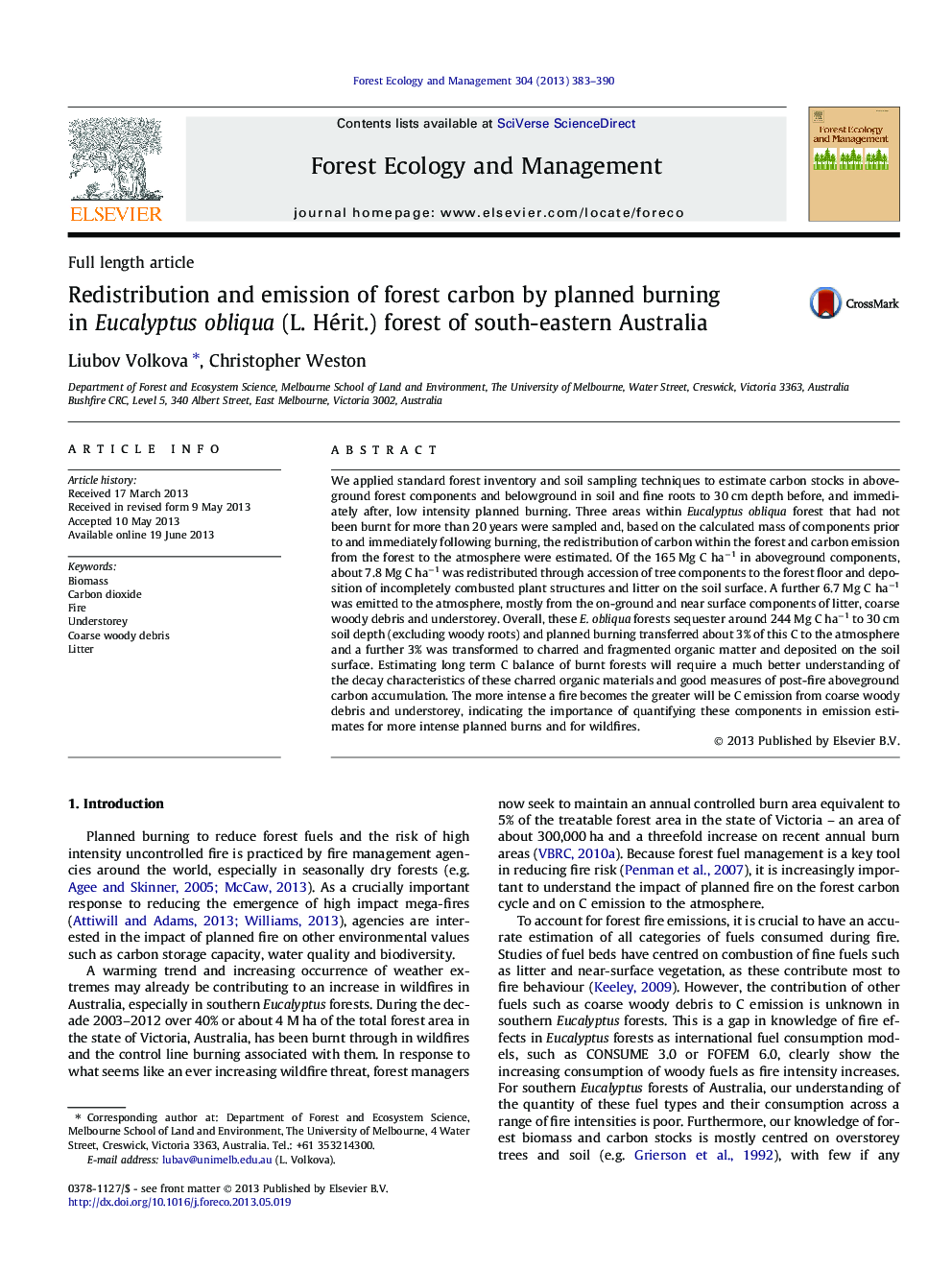| Article ID | Journal | Published Year | Pages | File Type |
|---|---|---|---|---|
| 6544325 | Forest Ecology and Management | 2013 | 8 Pages |
Abstract
We applied standard forest inventory and soil sampling techniques to estimate carbon stocks in aboveground forest components and belowground in soil and fine roots to 30Â cm depth before, and immediately after, low intensity planned burning. Three areas within Eucalyptus obliqua forest that had not been burnt for more than 20Â years were sampled and, based on the calculated mass of components prior to and immediately following burning, the redistribution of carbon within the forest and carbon emission from the forest to the atmosphere were estimated. Of the 165Â Mg C haâ1 in aboveground components, about 7.8Â Mg C haâ1 was redistributed through accession of tree components to the forest floor and deposition of incompletely combusted plant structures and litter on the soil surface. A further 6.7Â Mg C haâ1 was emitted to the atmosphere, mostly from the on-ground and near surface components of litter, coarse woody debris and understorey. Overall, these E. obliqua forests sequester around 244Â Mg C haâ1 to 30Â cm soil depth (excluding woody roots) and planned burning transferred about 3% of this C to the atmosphere and a further 3% was transformed to charred and fragmented organic matter and deposited on the soil surface. Estimating long term C balance of burnt forests will require a much better understanding of the decay characteristics of these charred organic materials and good measures of post-fire aboveground carbon accumulation. The more intense a fire becomes the greater will be C emission from coarse woody debris and understorey, indicating the importance of quantifying these components in emission estimates for more intense planned burns and for wildfires.
Related Topics
Life Sciences
Agricultural and Biological Sciences
Ecology, Evolution, Behavior and Systematics
Authors
Liubov Volkova, Christopher Weston,
